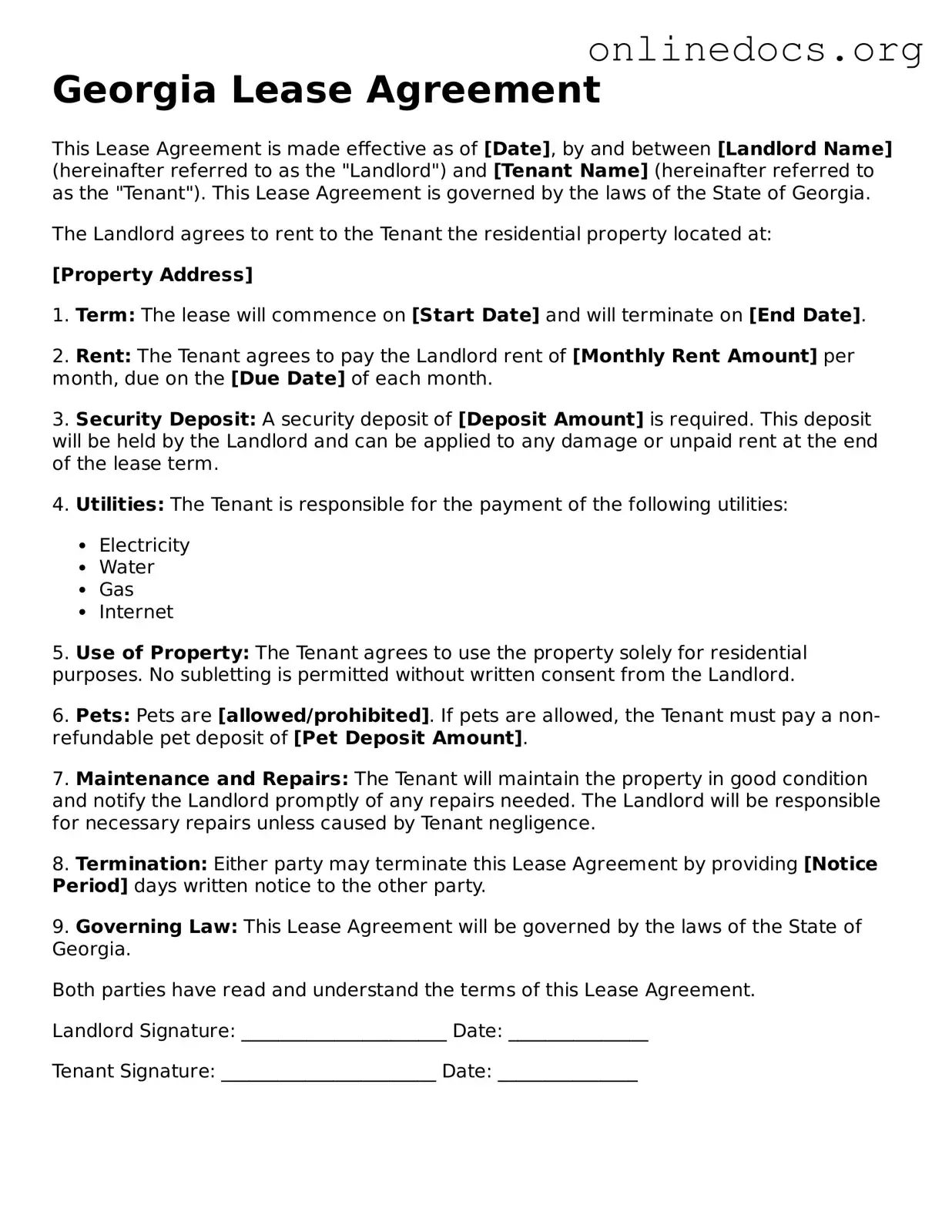The Georgia Rental Application is a document that prospective tenants fill out to provide landlords with necessary information about their rental history, employment, and creditworthiness. Like the Lease Agreement, it serves to establish a formal relationship between the tenant and the landlord. Both documents are crucial in the rental process, as they help landlords make informed decisions about potential tenants. While the Lease Agreement outlines the terms of the rental, the Rental Application focuses on gathering essential background information to assess the tenant’s suitability for the property.
The Georgia Security Deposit Receipt is another document closely related to the Lease Agreement. This receipt provides proof that a tenant has paid a security deposit to the landlord. Similar to the Lease Agreement, it outlines the financial obligations of the tenant and the landlord's responsibilities regarding the deposit. Both documents play a vital role in protecting the interests of both parties. The Lease Agreement specifies the amount and conditions under which the security deposit may be withheld, while the Security Deposit Receipt serves as evidence of the transaction.
For those looking to document a transaction properly, a straightforward guide to understanding the bill of sale is essential. You can fill out the necessary form by visiting this helpful Bill of Sale template resource.
The Georgia Move-In Checklist is a document that tenants and landlords use to document the condition of the rental property at the beginning of the lease term. This checklist is similar to the Lease Agreement in that it helps establish clear expectations between the tenant and landlord. Both documents aim to prevent disputes by ensuring that both parties agree on the property's condition before the tenant moves in. The Move-In Checklist complements the Lease Agreement by providing a detailed account of any existing damages or issues, which can affect the security deposit at the end of the lease.
The Georgia Lease Termination Notice is another important document in the rental process. This notice is used by either party to formally end the lease agreement. Similar to the Lease Agreement, it outlines the terms and conditions under which the lease can be terminated. Both documents emphasize the importance of clear communication and adherence to agreed-upon timelines. The Lease Termination Notice ensures that all parties are aware of their rights and responsibilities when ending the rental relationship, just as the Lease Agreement does when initiating it.
Lastly, the Georgia Pet Agreement is a supplemental document that can be attached to the Lease Agreement when a tenant has pets. This agreement outlines specific rules and responsibilities related to pet ownership within the rental property. Like the Lease Agreement, it sets clear expectations for both the tenant and landlord. It addresses issues such as pet deposits, restrictions on pet types, and potential damages caused by pets. Both documents work together to create a harmonious living environment, ensuring that all parties understand their obligations regarding pets in the rental property.
